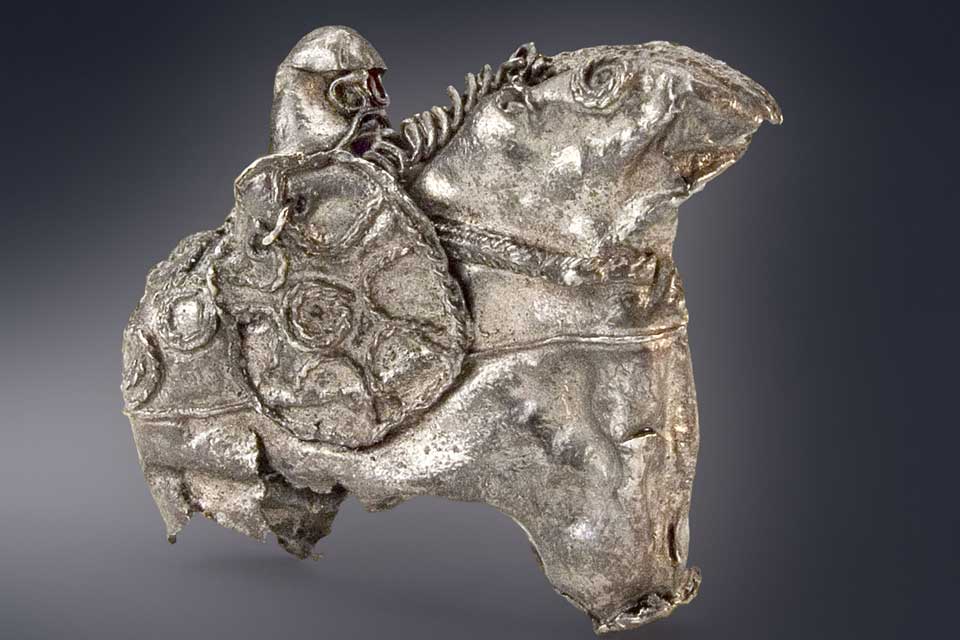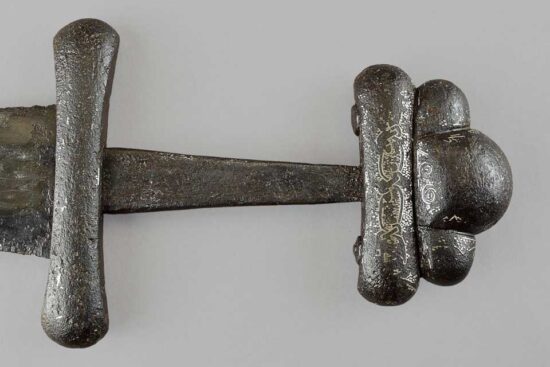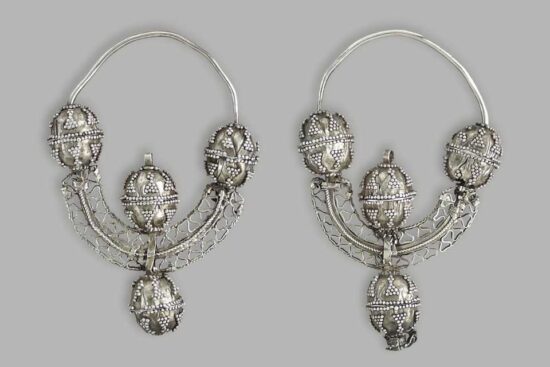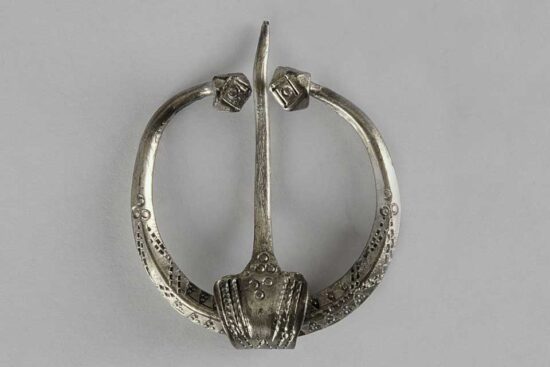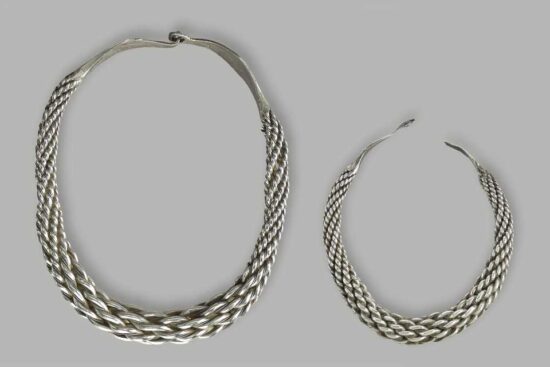In January 2022, the Museum at Moesgaard in Århus plans to open a new exhibition telling how the Vikings conquered the East while sailing, trading, raiding and settling from Novgorod to Kiev.
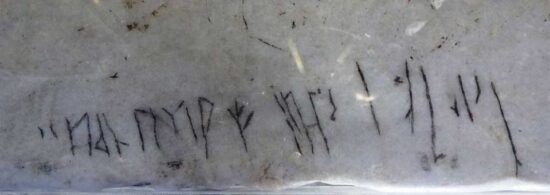
Once upon a time in the 9th century, a Viking entered the hallowed dome of Hagia Sophia. There at the top of a balustrade, he carved his name “Halvdan” with Runes. Halvdan is the hero of a future Viking exhibition at Moesgaard in Denmark, which aims to present the results of more than 30 years of new research which has been published since the “Fall of the Wall”.
“Austrevegr”, or the Eastern Way, which the Vikings forged along the great Russian rivers, is not a recent discovery inside the charmed circles of archaeologists and historians. The “Austrevegr” did not become a well-researched academic field until after the dissolution of the USSR and the reintegration of the Eastern European states into the EU.
Trade with the Caliphate and Byzantium was essential to the travels and settlements of the Vikings. This was a battle for power, wealth and not least for Arab silver. Tight control over the fur trade in the cold areas in the North and also the slave trade were linchpins in the Vikings’ success in the east.
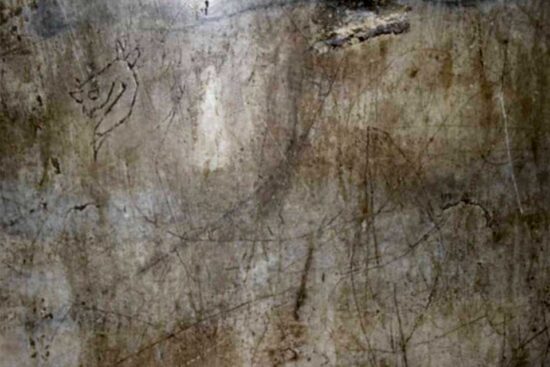 The Russian Vikings founded cities, long-distance trading stations, or transit hubs and gained a monopoly on trade throughout the Russian river systems. The meetings with the local tribes took place as a mixture of diplomacy and bloody battles, where the Rus mafia eventually gained power and control over tribal people and trade agreements with the Caliphate and Byzantium.
The Russian Vikings founded cities, long-distance trading stations, or transit hubs and gained a monopoly on trade throughout the Russian river systems. The meetings with the local tribes took place as a mixture of diplomacy and bloody battles, where the Rus mafia eventually gained power and control over tribal people and trade agreements with the Caliphate and Byzantium.
“Many of us regard the Vikings as young warriors who went west, ravaged, plundered and returned home. The Vikings’ expeditions west to Normandy and England are well explored and described. However, their travels to the East across the Baltic Sea and further along the rivers to Kiev, Byzantium and the Arab Caliphate, is less well known. At Moesgaard, we have long wished to set up a special exhibition focusing on the Vikings, their travels and their settlements in the east. The exhibition will follow the travels of the Vikings, which brought them into contact with worlds and cultures that were very foreign from their own: From the various peoples of the present Baltic, Ukraine and Russia and all the way to Byzantium and the Arab Caliphate. This exhibition should be based on the latest research, and tell what is for many a surprising story about the Vikings,” says the Director of Moesgaard Museum, Mads Kähler Holst.
One of the fascinating new chapters in this story is the richness in details that have come to light during the archaeological excavations in the last decades. For instance, the discovery of the Salme sailing ships dated to ca. 700-750 at Saaremaa in Estonia have led to expanding the timeframe for the Viking phenomena. Formerly dated to AD 793 and the attack on Lindisfarne, we now know of Viking raids a hundred years before. And to the East.
“We used to believe the towns of the old Russia were founded by local people. We now know Vikings were responsible for the development of these towns. Presumably, about 10% of the city population in the old eastern cities were Scandinavian immigrants; also, they left their mark on a larger geographical area surrounding these new trading posts. Scientific studies of DNA and strontium also contribute to our knowledge of their migration and mobility. We look forward to presenting all this new knowledge in our special exhibition,” says archaeologist and curator, Pauline Asingh .
The upcoming exhibition will invite its guests to follow in the steps of the Rus Vikings to participate in the journey of discovering the entire Eastern European continent, meeting fur hunters from the icy north, trading with the Slavic peoples to the East, and the horse nomads to the south. Visitors will accompany the Rus to the Caliphate and meet Arab merchants and deal on markets. In Byzantium, they will challenge the Eastern Roman emperor, while some will enter the service of the Emperor and take up a post among the Varangians, his personal bodyguards.
According to the Russian chronicler, Nestor, the elite – the grand princes of the Russian Empire – descended in a direct line from the Russian Viking Rurik, who in the year 862 was brought from Southern Scandinavia to Russia at the instigation of local tribes. Five princes, all descendants of Rurik, gathered and seized power in the “Rusrikr”. Dynastic relations between the Kiev Empire (the Mother of the Russian Empire), and Denmark can be traced back to Prince Vladimir and King Harald Bluetooth in the 900s. The trade in fur and slaves for the Caliphate brought the Vikings colossal riches, and buried treasures of silver from the Caliphate draw a clear trail along the silver route, the Volga River, and towards Southern Scandinavia and to the Baltics, where the largest slave markets were located.
The starting point for the story is, first and foremost, the objects’ testimony. They inform us that the Vikings left a very large imprint on the material culture of the “Østerled”, as the large land of the eastern fairy tales was called. To witness, more Scandinavian objects from the Viking Age have been found in Eastern Europe than in Western Europe. For the exhibition at Moesgaard, objects found in the princely tombs from Kiev kingdom will be on loan, while magnificent treasures of silver from the Arabian Caliphate will be exhibited.
The exhibition is organised in cooperation with the Museum network, “Vikings in the Baltic – The Age of Innovation”. Also, research carried out in connection with the Swedish research project: “The Viking Phenomena” will set its mark. Finally, the Museums in Vejle will be part of a parallel exhibition focusing on the Jelling dynasty and its eastern connections.
PRESS RELEASE:
Moesgaard præsenterer særudstilling om Rus-vikingerne
HEAR MORE:
